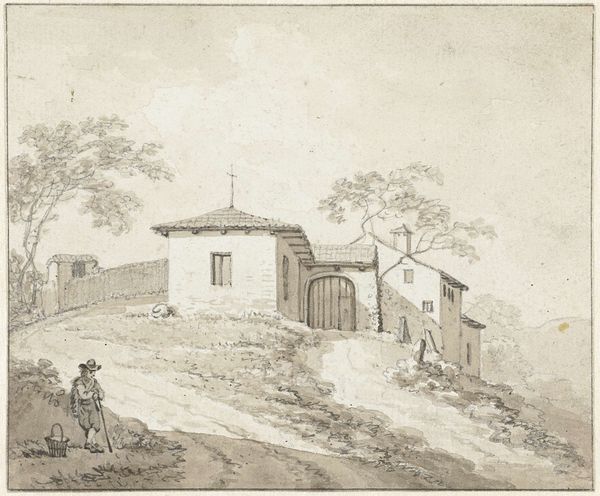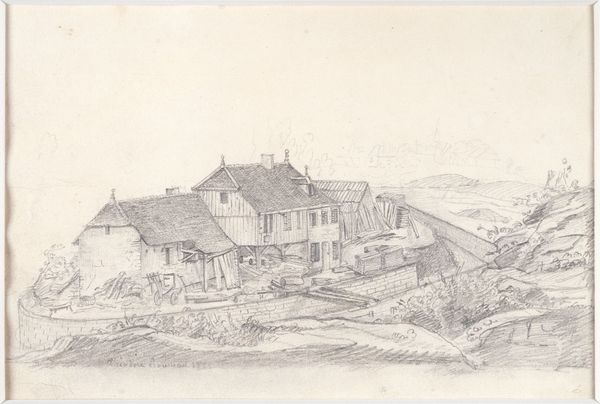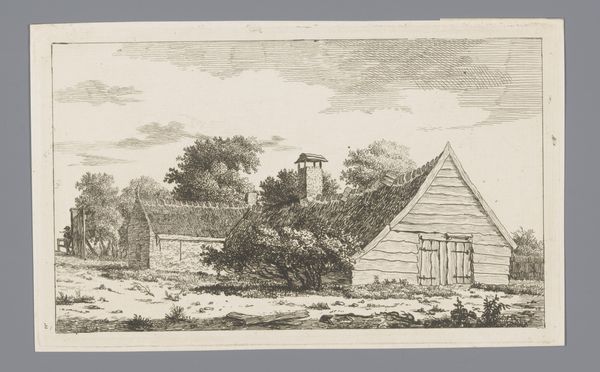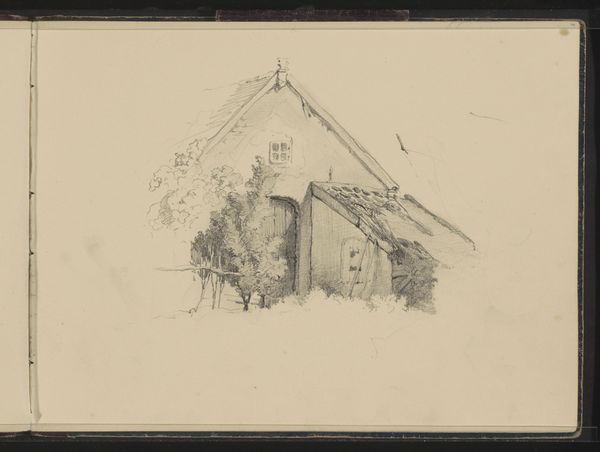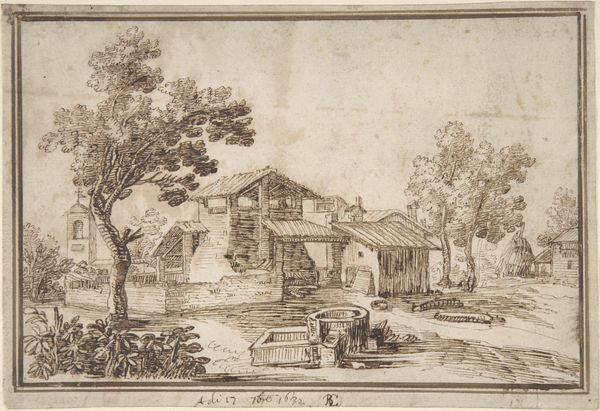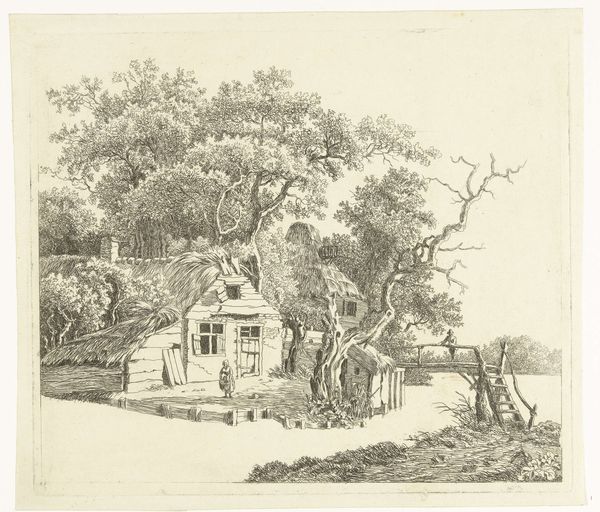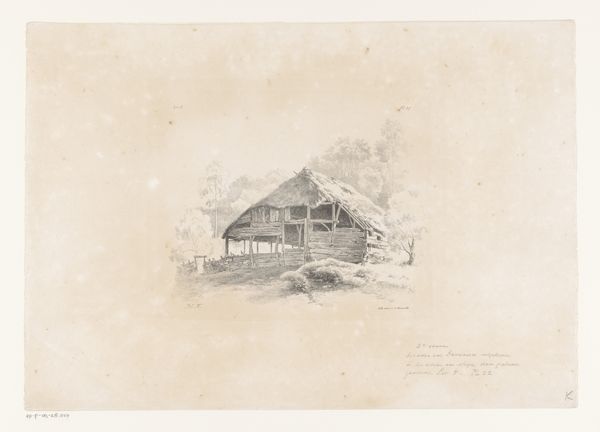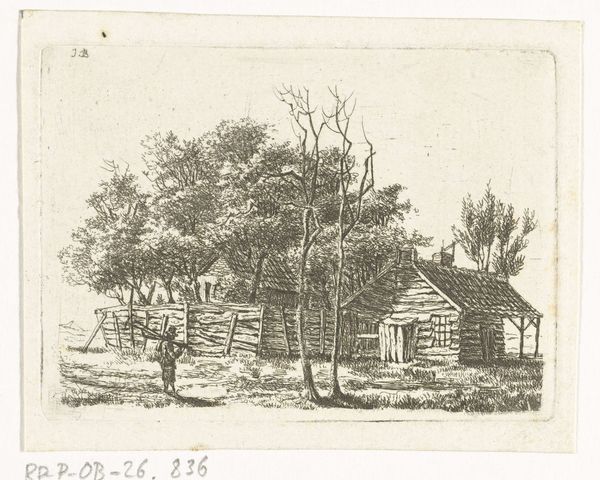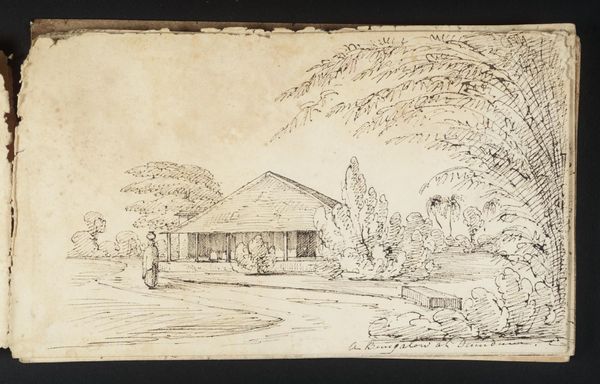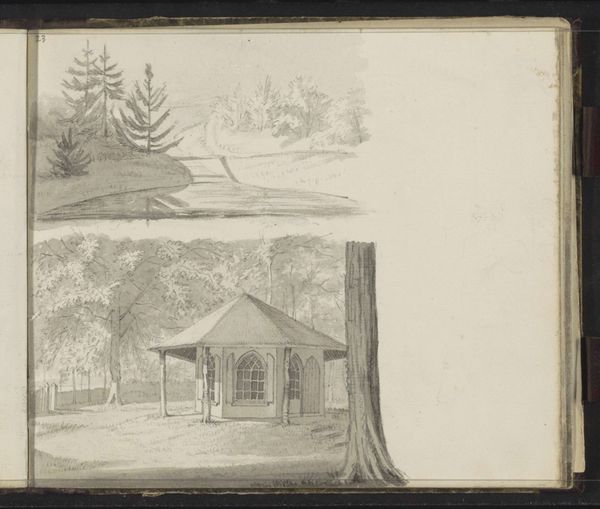
drawing, print, etching, pencil
#
drawing
# print
#
etching
#
landscape
#
etching
#
romanticism
#
pencil
Dimensions: 134 mm (height) x 216 mm (width) (plademaal)
Editor: Here we have "Et bondehus i Tyrol," or "A Farmhouse in Tyrol," an 1822 etching by August Krafft. There's something so appealing in its simple rendering, its reliance on line and form. What strikes you about the composition? Curator: I am immediately drawn to the structure of the piece. Note the artist's calculated use of lines – see how they delineate the facade of the house, the slopes, and the subtle modulations that describe the sky? Editor: The lines are so precise! It almost feels architectural. Curator: Precisely! Krafft prioritizes clarity and construction. The etching employs delicate cross-hatching to evoke depth, and he uses tonal contrasts within the structure of the house to generate a dynamic interplay between shadow and light. Editor: It makes it feel very three-dimensional, despite being a drawing. I’m also curious about the placement of the house itself. Curator: Consider the positioning of the farmhouse relative to the surrounding landscape. The placement, slightly off-center, contributes to an asymmetry that keeps the eye engaged. And what do you make of the stark white frame around the image? Editor: That frame is fascinating, like a window in itself, creating a self-contained world. Curator: Precisely. The frame further enhances the piece’s structural nature, setting up an elegant opposition to the wild nature around the building. Through controlled artistry and formal considerations, the essence of the Tyrolean countryside is beautifully preserved. Editor: I see what you mean! Thank you for elucidating those features for me, I can look at it in a whole new way now! Curator: It has been a pleasure to share my observations, understanding the mechanics through which art speaks truly enriches our appreciation.
Comments
No comments
Be the first to comment and join the conversation on the ultimate creative platform.
